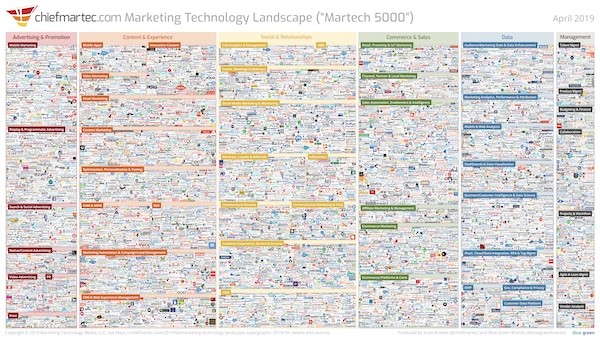10 min read

Ian C. Tomlin

Every B2B startup business needs to be good at digital marketing to reach its customers. Why? Because, according to Gartner, nearly 80% of the B2B buying cycle happens before a prospect ever speaks to a customer—and it happens online. Read this simple guide to learn about the importance of lazy marketing to fuel your growth, and create that mountain of leads you’re searching for.
Time to get real
If you are leading a B2B startup, you’ve probably got a good idea of what your customer proposition looks like, or at least you know what a good prospect looks like. If you are VERY FORTUNATE, you have good answers to both. What you now need is a marketing engine that’s going to generate all those lovely leads!
A study by Gartner found that only 17% of buyer time is spent talking to potential suppliers… and 33% of all buyers desire a seller-free sales experience – a preference that climbs to 44% for millennials.
This means—to reach your buying audience—you’re going to have to get good at marketing, and quickly.
What is Lazy Marketing?
I developed the concept of Lazy Marketing to get people like you wired to the right attitudes needed to make marketing work in the digital age. It’s framed around the minimum effort, maximum gain mantra. To understand it really well, you’d need to meet my mate Gary Greaves.
Gary is now retired. He retired early because he could…. Because he’s lived his entire life adopting Minimum Effort, Maximum Gain as his war cry. Every time he progressed in his career (and he progressed quickly, and many times), he would bring along his Minimum Effort, Maximum Gain philosophy for the company.
Business people have an instinct to be busy. If they’re not working at 120%, they don’t feel they’re putting in enough effort.
And fuelled by stories like Elon Musk working 14-hour days to get ahead, we have an entire generation of business newbies that are persuaded by the hustle culture portrayed in social media that makes them think that burnout is a normal part of life.
Now, I’m not here to tell you that it’s wrong to put your shoulder to the wheel, your nose to the grindstone—and all that stuff. No. I’m simply hoping to persuade you that digital marketing is already a BIG JOB, and you don’t need to make it harder for yourself by doing stuff you don’t need to grow your business.
And fuelled by stories like Elon Musk working 14-hour days to get ahead, we have an entire generation of business newbies that are persuaded by the hustle culture portrayed in social media that makes them think that burnout is a normal part of life.
What people waste their time on
Success generally comes to people that are healthy, energetic, positively charged, not exhausted waifs that haven’t found time to eat and haven’t slept for three days.
It’s always my belief that customers can smell desperation. You wear it on your sleeve. When you run a business you need to exude confidence and calm, even when behind the scenes you’re running scared and suffering from imposter syndrome.
You need to be cruelly brutal when it comes to prioritizing any effort you put into marketing because it can consume your work time. If you don’t control it, it will control you.
Producing content, videos, social media posts, attending meetings, etc. without a clear outcome or measurable gain is ‘being busy’ though it won’t bring you glory.
It takes approximately two hours to write a blog article, and two full days to compose a white paper—even if you are good at it. Spending time on social media and answering emails can fill your day if you want these habits to overtake you, and it doesn’t take a clever businessperson to fill their diary with meetings, it takes an experienced one not to.
Lazy Marketing is about doing what you must do to GROW YOUR BUSINESS. It’s about adopting a psychology that cherishes least effort for maximum gain—so don’t punish yourself or your team for finding time to think or take a break, be critical when you don’t.
Marketing is too big
In fact, the subject of marketing is SO big and hairy that most of us can’t get our heads around it… which is why I try to encourage business leaders to ignore the term altogether and focus on a list of obvious positive habits that you need to install in your strategy.
There are of course a number of critical components to a customer growth agenda you do need to get right; such as profiling your customer, understanding the pains and gains your offer delivers, building and amplifying an authentic brand, finding the best ways to get in front of prospects, measuring your results and buyer behaviors, etc. We’ve summarised these in our article: the 10 Positive Growth Habits Every Startup Needs.
By all means, set silly lead targets but don’t believe your own propaganda
It’s a mistake to write a big target for sales leads on your whiteboard and expect your marketing people to serve it up. Sadly, there is no silver-bullet IT or single methods-based solution that’s going to magically give you a mountain of leads. Neither can you steal time somehow and deliver campaigns in a matter of days. It takes around 6-weeks of planning and content production to serve up an effective sales and marketing program.
Instead, first, 1. run a marketing program, then 2. find out what results you can achieve from your outreach agenda—and finally, 3. learn from it and improve it.
The good news is, by the end of the first cycle, you’re going to know if your marketing engine/provider is any good.
Don’t get lost in MarTech
You’ve no doubt by now had that thought in the back of your mind that—when it comes to digital marketing—you’re missing something. Some vital bit of knowledge that clever marketers have and you don’t. Maybe a super-duper bit of marketing tech (MarTech) that will make the job easier.
There are over 5000 MarTech products out there for you to take a look at. Though, common sense suggests, you haven’t got the time to test them all. According to the latest research, technology currently accounts for the largest proportion of marketing budgets (26.2%). This means, over a quarter of the marketing budget gets spent on internal software infrastructure, not one cent of which actually creates a new customer.

Read our Roundup of Essential Marketing Tech for Startups
The ideal solution is to work out what you need and come up with a technology solution that offers it all. But that’s going to be a difficult task. At Newton Day, we’ve come up with a set of tools that we’re comfortable with, and we train our entire team on the same tools so they know how to make the best of them. And we’re always on the lookout for new solutions. For me, it’s better to have a coherent end-to-end solution people know how to use (with end-to-end monitoring of results) than a bag-load of great products that don’t all integrate smoothly with one another.
Final Thoughts
I don’t think it’s helpful when businesses pin all their hopes on marketing and separate the subject out from their business leadership agenda. If your marketing fails, your business fails—so stop treating it as a separate subject and instead, learn about how to install positive habits your business needs to get it right. This is one of the reasons why growth engineering is different to traditional marketing, but it’s not the only reason. Read our article on what growth engineering is about and why it’s hands down better than marketing.
Ready to get your growth on-track?
Click the big red button
to get started
Further Reading
Unlocking Partnership Power
Read this article to learn how to realize your partnering opportunity for B2B marketing
The Podcast Boom
Read this article to learn how audio storytelling is reshaping B2B marketing
Whisper Search
In this article, I examine how websites are dying and voice search is growing.



